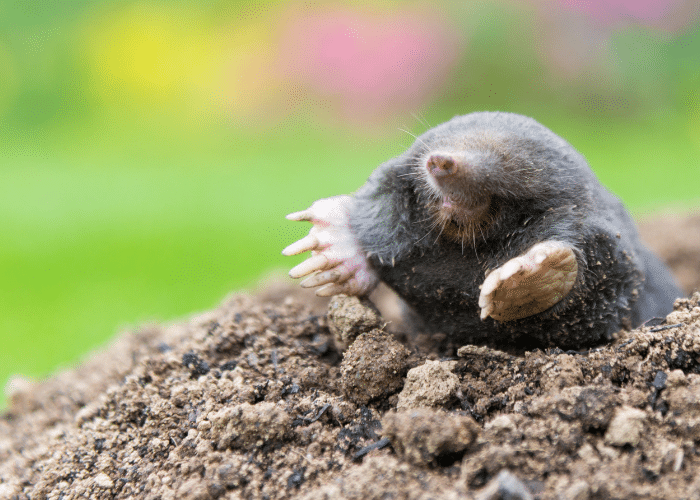
Welcome to our comprehensive guide on managing opossums. These unique creatures, also known as Virginia opossums, are commonly found in North America and can often cause conflicts with human populations.
The aim of this article is to provide a thorough understanding of the Virginia opossum, including its biology, behavior, and potential impacts on human communities. We will also discuss safe and humane methods for removing opossums and preventing future encounters.
- Understanding Virginia Opossums
- Potential Conflicts with Human Populations
- Methods of Identification
- Removal and Control
- Prevention Measures
- Resources and References
Whether you are dealing with an opossum problem on your property or simply interested in learning more about these fascinating animals, this article is your go-to resource for all things opossum.
Understanding Virginia Opossums
Virginia opossums, also known as Didelphis virginiana, are fascinating creatures that can be found throughout North and South America. These marsupials have a distinctive appearance with long pointed snouts, hairless ears, and prehensile tails. Their coats can vary in color from gray to black to brown, and they have a distinct white face with black markings.
These opossums are mostly nocturnal, meaning they are active at night, and have a wide range of habitats, including forests, swamps, and urban areas. They are omnivorous, feeding on a variety of foods such as insects, fruits, and small animals. Opossums are also known for their unique hunting techniques, using their keen sense of smell and sharp claws to find and capture prey.
The classification of opossums includes more than 100 different species, each with its own unique characteristics and behaviors. The etymology of the word “opossum” can be traced back to the Algonquian language, meaning “white animal.” These creatures have evolved over time, adapting to their environments and developing the ability to play dead when threatened. Overall, the Virginia opossum is a resilient species with a rich history and impressive abilities.
Potential Conflicts with Human Populations

Opossums are nocturnal animals and are known to roam the streets at night often coming into contact with humans. While these creatures are generally non-aggressive and shy they can pose potential threats to human populations.
One of the main concerns with opossums is the risk of diseases such as rabies. While it is rare for opossums to carry rabies it is still a possibility precautions should be taken when dealing with these animals. Other diseases that opossums may carry include leptospirosis and tularemia.
Aside from health risks roaming opossums can also cause damage to property and gardens may disturb pets livestock etc.. In urban areas oposums can become nuisance by tipping over garbage cans scavenging for food etc..
In some cases posums may also take up residence in attics sheds other structures causing damage creating a mess. Therefore it is important to take proper precautions measures to prevent conflicts with opossums.
Methods of Identification
Identifying an opossum can be confusing as there are several species that share similar characteristics. However, there are a few key physical traits that can help distinguish one species from another. Here are some tips for identifying different types of opossums:
1. Common Opossums: The Virginia opossum (Didelphis virginiana) is the most commonly found species in the United States and Canada. They have a white face with a pink nose and sharp teeth, a grayish-black body, and a long scaly tail.
2. Slender Opossums: This group includes species such as the delicate slender opossum Brazilian slender opossum Panama slender oposum etc.. They have long narrow bodies with long tails small heads etc..
3.Mouse Opossoms: This group includes species such as the gray mouse posssom woolly mouse possom red mouse posssom etc… These opposums are much smaller than common opposums have mouselike appearance large eyes ears etc…
When attempting to identify an oppossom it is important to observe its physical characteristics including size color body shape etc.. Additionally consulting wildlife expert or using field guide can help with proper identification.
Removal and Control

To ensure safe humane removal of opposums is crucial in effectively managing their presence here are some steps to follow for removal:
- Identify the problem:
- Use deterrents: In some cases opposums can be deterred from entering property by using natural deterrents such as ammonia predator urine motion-activated sprinklers etc..
- Secure food sources: Opposums are attracted to food sources so it is important to secure garbage cans eliminate any potential food sources in area.
- Seek professional help: In some situations it may be necessary to seek help from professional wildlife removal service. They have necessary equipment training safely remove oppossums without harm.
- Be aware of laws regulations: It is important to be aware of any laws or regulations regarding opossum removal in your area. Contact local fish & wildlife agency Department of Natural Resources for more information.
By following these steps you can effectively safely remove opossums from your property. Remember always prioritize safety well-being both the opossums yourself.
Prevention Measures
To manage opossums prevention is key. By implementing these strategies you can decrease chances encountering opossums on your property reduce potential conflicts with these creatures.
- Educate yourself others in household about oppossom behavior habits. Understanding how opposoms operate can help take proactive measures prevent them from entering property.
- Secure potential food sources such as garbage cans pet food. Opossoms are notorious scavengers and by eliminating their food sources you can discourage them from visiting your property.
- Utilize motion-activated lights sprinkler systems deter opposums from entering your property at night.
- Consider installing fences barriers around your property to keep opposums out. Be sure bury fence at least 12 inches prevent them from digging underneath.
- Trim tree branches shrubs prevent opossums from using them as access points to your property.
- If you have compost pile be sure secure it with lid prevent opposums from rummaging through it for food.
By following these prevention measures you can minimize chances encountering opossums on your property reduce potential conflicts. Remember prevention is always better than dealing with nuisance opossum on your property.
Resources and References
The following resources and references provide valuable information on managing Virginia opossums and their behavior.
- Fish & Wildlife Agencies
- Humane Society of the United States (HSUS)
- Alaska Department of Fish and Game
- California Department of Fish and Wildlife
- Humane Society of the United States (HSUS)
- Baker, R.O., Timm, R.M., & Timm, R. (2017). Wildlife Damage Management: Prevention, Problem Solving, and Conflict Resolution. Johns Hopkins University Press.
- Anderson, J.R., Jones C., & Timm R.M. (2020). Preventing Damage by Opossums. University of California Agriculture and Natural Resources.
- Neighbor J.L. (2014). Virginia Opossum (Didelphis virginiana). North Carolina Wildlife Resources Commission.
Conclusion
In conclusion understanding effectively managing opossums is crucial for both safety of human populations well-being of these unique creatures. By learning about their physical characteristics behavior habitat we can better coexist with them. Additionally safe humane removal methods as well as prevention measures can help prevent potential conflicts with oposums.Remember always seek professional help when dealing with opposums be mindful legal implications of removal.We hope this comprehensive guide has provided valuable insight into world Virginia opossums equipped you with necessary tools manage their presence in your surroundings. For more information resources please refer to our list references external links above.





